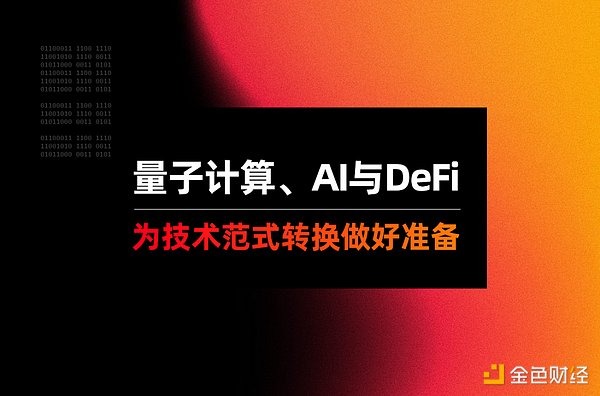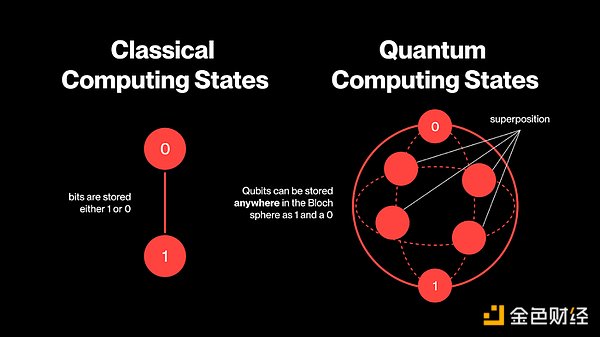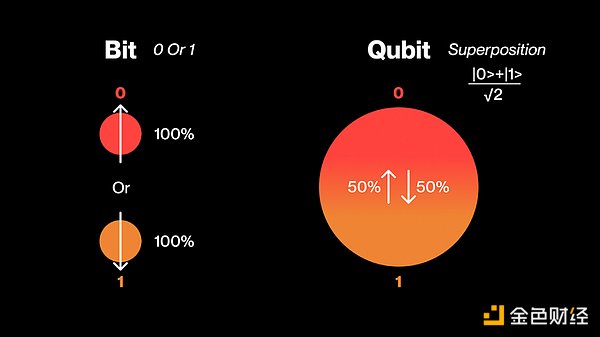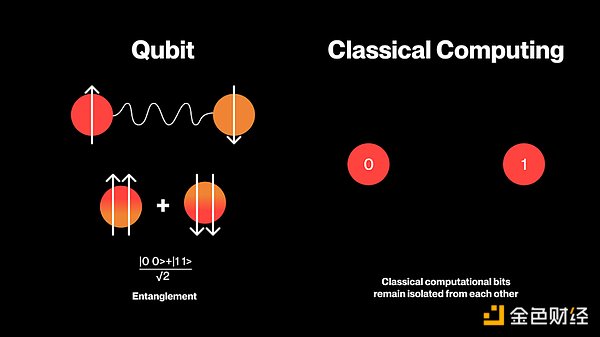Author: Kava Labs Source: medium
In related articles on AI-driven risk assessment, we have seen how AI can enhance cybersecurity through anomaly detection and predictive analysis. However, what would happen if another independent innovative technology emerged and triggered a new technological paradigm shift in the field of decentralized finance (DeFi)? What if this new technology could completely overturn the foundations that DeFi relies on by breaking encryption technology?

With the development of quantum computing, many experts are also concerned about the future. These concerns have existed since the early days of cryptocurrency, and have existed since the beginning of encryption technology, but they have been further exacerbated with Google's announcement of the launch of its latest quantum computer chip, Willow, in the fourth quarter of 2024.
So, in this article, we’ll explore how quantum computing works, its potential threat to DeFi, and whether the industry should be wary of it in the future.
Contrast Between Traditional and Quantum Computing
When exploring the threat of quantum computing, it’s important to first understand that it’s fundamentally different from the traditional computing systems we’re familiar with today. To begin to understand it, we must drill down to the smallest unit of digital information — the bit. The bit is the fundamental building block of all modern computing technology and has historically been represented by either a 0 or a 1.
This fundamental unit has allowed modern computing technology to structurally develop on top of it. The power of the binary system allows us to establish a solid foundation upon which larger, more complex systems can be built.
Quantum computing challenges the nature of the binary system by creating an alternative to this unit of computing. In quantum computing, an alternative quantum bit (qubit) has multiple possibilities not only in the positions that a traditional bit can be in, but also in the multiple realities of whether it can be encoded as 1 or 0.

Superposition
Superposition is one of the cornerstones of quantum computing, but it is very abstract and may be difficult for some people to understand. In traditional computing, the state of a bit is always 100% certain, either 1 or 0. In quantum computing, a quantum bit (qubit) can represent 1 and 0 at the same time. You can imagine something being "yes" and "no" at the same time. This doesn't seem to make much sense in traditional thinking and classical models.
The easiest way to explain this phenomenon is through 20th century physicist Erwin Schrödinger and his theory of the uncertainty principle of quantum mechanics. You may be more familiar with Schrödinger's cat experiment, in which we are asked to imagine a situation where a cat is placed in a sealed box with a Geiger counter and a piece of radioactive material that releases poisonous gas when it decays. In theory, since the decay process of radioactive materials is uncertain, the cat is technically in a state of both alive and dead before the box is opened, because we cannot be sure which state is accurate until we open the box and see for ourselves. Qubits are both "alive" and "dead" before they are forced to perform a calculation.

Entangled States
If you are still reading, congratulations, the concept of quantum computing has not yet blown your brain away. Well, after we understand what qubits are and how they are represented, we need to go a step further and explore how the particles inside each qubit are interconnected. This is called entangled states, and it is the second cornerstone of quantum computing.
We have seen how quantum computing works on a thought experiment model similar to Schrödinger's cat. However, quantum computing, with entangled states, takes this analogy to the next level. Quantum computing is not just about maintaining two computational states at the same time, but involves more contexts that interact and change each other through multiple locations. Imagine you are navigating a maze. In traditional computing, if your first path leads to a dead end, it can be classified as zero. The second attempt also fails, and the process continues in order until the right answer is found. Quantum computing maps out all the paths to the same situation at the same time, and each failed and successful path affects the results of all the other scenarios.

Thought experiment or something else?
While trying to understand the theory of quantum computing is difficult, it is crucial if we are to consider innovative increases in computing power. The superposition and entanglement of qubits allow quantum computing to handle problems at a scale and speed far beyond anything we can understand today.
We showed the different sizes of modern digital information in our article on the limits of technological innovation. From how many kilobytes it takes to store an average word processing file of a five-page document to how many megabytes it takes to store a three-minute MP3 audio file, understanding the scale of digital data is key to understanding why the fundamental building block reconstruction from bits to qubits has such a compounding effect.
With this frame of reference, we can begin to understand the power of quantum computing. Google claims that its new quantum chip, Willow, will process a problem in five minutes that would take the fastest conventional computer on the market today one billion billion years (10 to the 27th power) to solve. Five minutes versus 10,000,000,000,000,000,000,000,000 years.

The End of Modern Cryptography?
You may have seen that quantum computing could begin to pose a systemic threat to the decentralized finance (DeFi) industry. Such powerful computing power is exactly the kind of technology that could replace the cryptographic security that underpins the entire blockchain ecosystem. Brute force attacks can reveal private key information and steal user accounts in a split second.
In our previous article, we mentioned that the integration of AI and blockchain interoperability could lead to a "poison pill" effect in which malicious actors operate. Now, combine these theories with the potential of quantum computing, and it's easy to imagine a future where the entire DeFi space is completely disrupted in a matter of minutes.
Reasons for Optimism
If you are worried about the threat that quantum computing poses to DeFi, there are still multiple reasons to be optimistic. First, if you haven't realized it yet, quantum computing is extremely complex, difficult, and expensive. Today, only a handful of quantum computers exist, mostly developed in tightly regulated and controlled environments at companies like IBM, Google, Amazon, and Alibaba. These companies have no interest in undermining the cryptographic security of DeFi. To do so would undermine the same cryptographic security used to protect traditional banks and national defense infrastructure, including nuclear reactors and weapons systems.
Second, we often underestimate the importance of our industry. The total value (TVL) in the DeFi space is currently $125 billion, which is still a very young and small industry in comparison. Money market banks have a market cap of over $90,964.7 billion and integrated oil and gas has a market cap of over $109 billion. While this may sound pessimistic, if quantum computing technology accelerates and becomes a threat, attacking the DeFi space will be the least attractive target, because everything else in the world will be equally vulnerable or even more vulnerable. Even if DeFi is targeted, we will face the social consequences of quantum computing attacks, especially in other more pressing areas such as global supply chain disruptions, AGI (artificial general intelligence), or nuclear weapons deployment. Securing DeFi and private keys may no longer be our top concern.
In addition, as technology advances and new threats emerge, new solutions will follow. Post-Quantum Cryptography is an important topic in this field. Developers have become deeply aware of the threats that quantum computing may bring if it is unleashed without adequate security guarantees. The National Institute of Standards and Technology (NIST) is leading the work to establish global post-quantum cryptography standards.
We should also recognize that the emergence of quantum computing is a positive force. The powerful computing power granted by the quantum computing model will enable unprecedented discoveries in areas ranging from space travel to the global Internet of Things and AI integration. Through our series of articles, we have seen AI accelerate the process of innovation in smart vehicles, medical breakthroughs, and drug discovery. Quantum computing will further enhance and accelerate the pace of discovery, even beyond the imagination of the most optimistic futurists.
Finally, we should admit that quantum computing is still in its early stages. Even with the arrival of the Willow quantum computing chip, practical real-world applications of quantum computers are still limited. To be fully operational and integrated with the real world, quantum computers must extensively index the current digital landscape. Transforming industries to defend against the threat of quantum computing, or simply prepare for its benefits, will be a daunting task that society must overcome. Whatever the future of quantum computing holds, it is destined to be an interesting and disruptive path. How DeFi, AI, and post-quantum cryptography respond will be one of the most defining periods of the 21st century.
 Kikyo
Kikyo
 Kikyo
Kikyo Davin
Davin Brian
Brian Alex
Alex Kikyo
Kikyo Brian
Brian Brian
Brian Joy
Joy Alex
Alex Kikyo
Kikyo